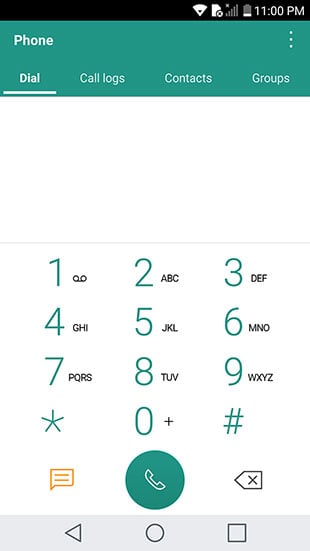LG V20 Review: Android Nougat-Infused And Feature-Rich
LG V20 Software And Camera Performance
Another first for the LG V20 is that it's one of the first non-Google Nexus devices to rock Android 7 Nougat. LG lightly skins Nougat with a glaze called UX 5.0+. The interface is flat and clean with little drill-down and multimedia functions catered to for easier access. The V20 also is capable of Android 7 Nougat’s multi-window view. This brings formal split screen functionality to Android for the first time with resizable app windows and the ability to drag text, images and files from one app to another.




HiFi Quad DAC Toggle (left) and Android Nougat Split Screen Mode (right)



LG V20 Multi-View shot with standard and wide angle modes from front and rear cameras










HiFi Quad DAC Toggle (left) and Android Nougat Split Screen Mode (right)
LG's HiFi Quad DAC - Not Just A Gimmick Feature
You might brush it off as gimmickry at first glance, but we assure you it is not. LG's HiFi Quad DAC feature is enabled or disabled via a software control switch in the settings control panel (see above), and it is very much the real deal. Powered by an ESS ES9218 quad DAC, or digital to analog converter, the dynamic range with this feature enabled is appreciable. There’s almost a better spatial effect with the setting enabled, but really everything just sounds more open.
At first it may sound like you’ve lost a tiny bit of low-end response with the feature enabled, but in reality it’s just that the low-end is tighter, less muddy and every bit as present. If there was a single word to describe the effect, it would be “accuracy." LG’s HiFi quad DAC feature really makes a nice difference in fidelity. You’ll need a quality set of headphones or buds, and quality recorded source material to appreciate it fully, but there’s no question, this isn’t just a gimmick and it really makes a significant difference in audio fidelity.



LG V20 Multi-View shot with standard and wide angle modes from front and rear cameras
LG backs its trio of cameras (two rear-facing, one front-facing) with a solid software setup that has full auto and manual modes for both stills and video. You also get lots of different shot modes like Panorama, Slow-Mo and even Mutli-Shot modes that combine all three on board cameras to compose a shot. Manual functions include things like ISO, shutter speed even metering and the ability to shoot in RAW format. The rear-facing, 8MP wide-angle camera works relatively well, giving you the ability to capture a much wider horizontal view of a scene, which could come in handy shooting things like outdoor areas or live performances and the like.






Wide angle shots with the rear camera do, however, currently result in a bit of a fish-eye effect (middle row shot, right side), with certain straight edges in a scene being warped in spots (deck railing in the shot above). This is perhaps something LG can mitigate in a future software update and again, we’d underscore that the V20 we’re testing is technically a pre-release unit. Otherwise, shooting stills with the LG V20 proved to offer reasonably good results, though perhaps with a bit of over sharpening. Low light performance is also bit of a mixed bag currently, with some shots having notable grain, while other shots looked really good (indoor nick-nack table with white chair rail), as the V20’s F1.8 aperture lens and 16MP sensor are relatively responsive to pulling in light. Comparatively, versus phones like the Samsung Galaxy S7 and Moto Z series, the LG V20 holds its own, offering a competent, capable camera setup with features you won't find in most other smartphones.






